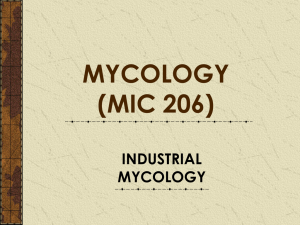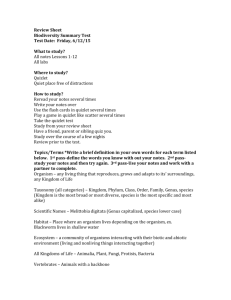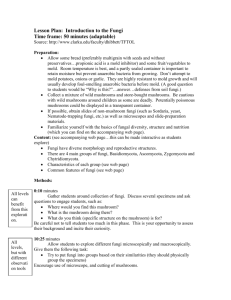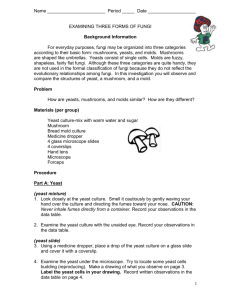Fungi – Small Wonders
advertisement
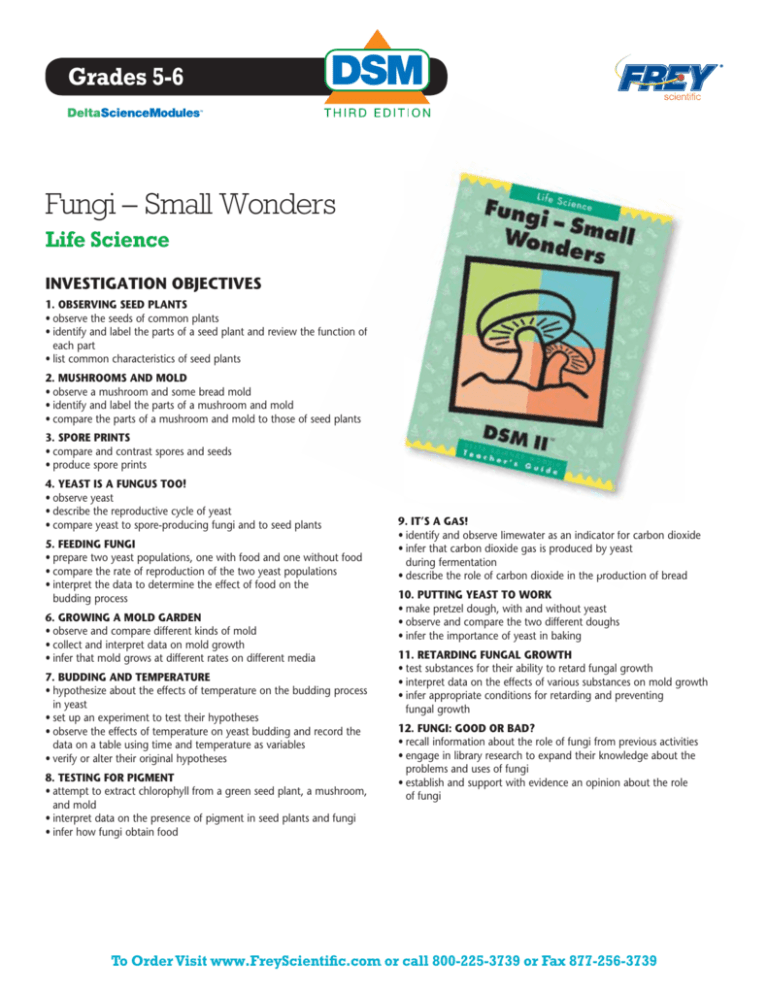
Grades 5-6 Fungi – Small Wonders Life Science INVESTIGATION OBJECTIVES 1. OBSERVING SEED PLANTS • observe the seeds of common plants • identify and label the parts of a seed plant and review the function n of each part • list common characteristics of seed plants 2. MUSHROOMS AND MOLD • observe a mushroom and some bread mold • identify and label the parts of a mushroom and mold • compare the parts of a mushroom and mold to those of seed plants 3. SPORE PRINTS • compare and contrast spores and seeds • produce spore prints 4. YEAST IS A FUNGUS TOO! • observe yeast • describe the reproductive cycle of yeast • compare yeast to spore-producing fungi and to seed plants 5. FEEDING FUNGI • prepare two yeast populations, one with food and one without food • compare the rate of reproduction of the two yeast populations • interpret the data to determine the effect of food on the budding process 6. GROWING A MOLD GARDEN • observe and compare different kinds of mold • collect and interpret data on mold growth • infer that mold grows at different rates on different media 7. BUDDING AND TEMPERATURE • hypothesize about the effects of temperature on the budding process in yeast • set up an experiment to test their hypotheses • observe the effects of temperature on yeast budding and record the data on a table using time and temperature as variables • verify or alter their original hypotheses 8. TESTING FOR PIGMENT • attempt to extract chlorophyll from a green seed plant, a mushroom, and mold • interpret data on the presence of pigment in seed plants and fungi • infer how fungi obtain food AS! 9. IT’S A GAS! ve limewater as an indicator for carbon ca • identify and observe dioxide • infer that carbon dioxide gas is produced by yeast during fermentation product • describe the role of carbon dioxide in the production of bread 10. PUTTING YEAST TO WORK • make pretzel dough, with and without yeast • observe and compare the two different doughs • infer the importance of yeast in baking 11. RETARDING FUNGAL GROWTH • test substances for their ability to retard fungal growth • interpret data on the effects of various substances on mold growth • infer appropriate conditions for retarding and preventing fungal growth 12. FUNGI: GOOD OR BAD? • recall information about the role of fungi from previous activities • engage in library research to expand their knowledge about the problems and uses of fungi • establish and support with evidence an opinion about the role of fungi To Order Visit www.FreyScientific.com or call 800-225-3739 or Fax 877-256-3739


